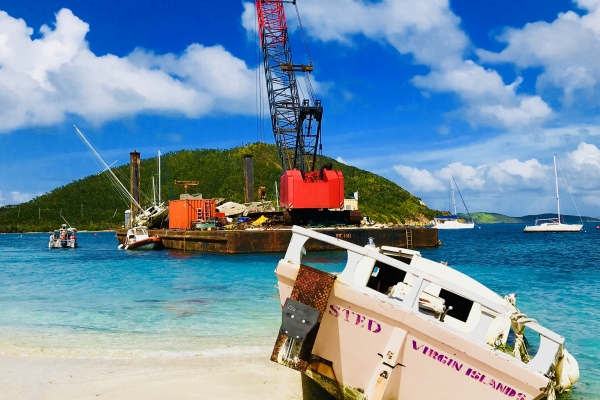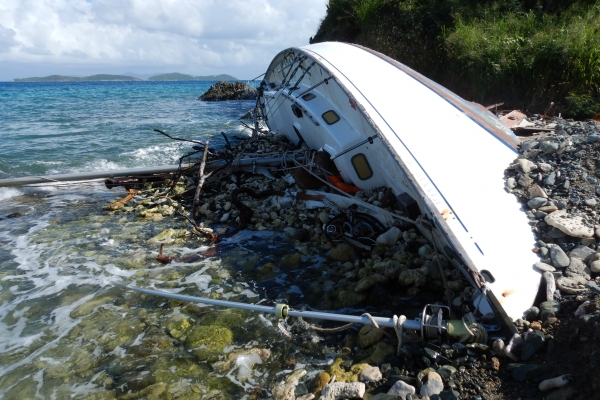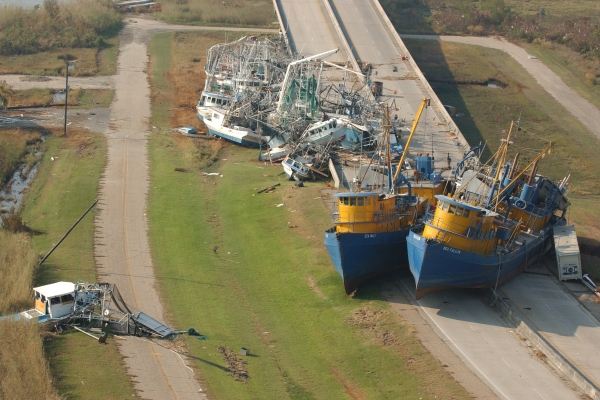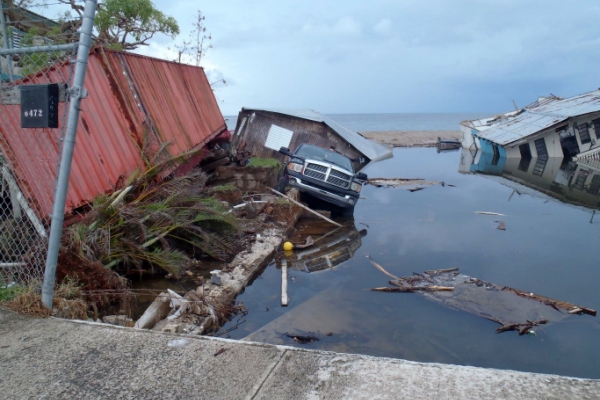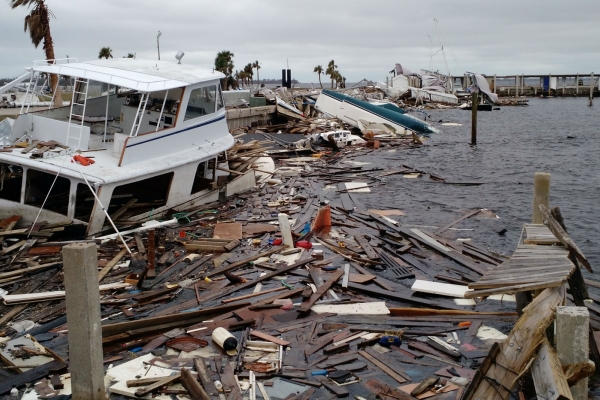Did you know that a category 3 hurricane can produce over 70 million cubic yards of debris? That’s about 31 football stadiums worth of debris! If the debris is near shorelines or waterways, it can end up in the water as marine debris. Removing that much debris is a difficult and expensive process, and it can be difficult to know how to get started. That’s why the NOAA Marine Debris Program is participating in Hurricane Preparedness Week and working with coastal states and U.S. territories to help communities prepare for marine debris after hurricanes.
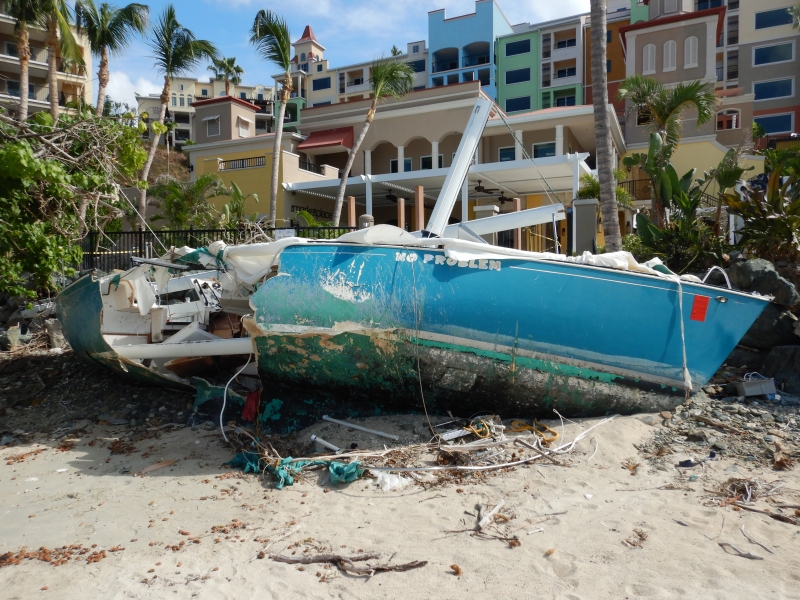
Unlike debris on land, it can be complicated for cities and states to figure out who is responsible for removing marine debris, and can also be expensive. The cost to remove a single damaged boat can range from thousands to many millions of dollars, depending on the size of the vessel and where it is located. Not only is marine debris removal costly, but it can also be dangerous. Large items, such as capsized vessels or pieces of buildings and docks, are a threat to boaters and can damage the environment. Marine debris can even be a source of pollution and release oil or hazardous chemicals. To help address this problem, the Marine Debris Program has partnered with other organizations to create state marine debris response guides for debris responders.
Marine debris response guides have been published for eleven coastal states, with a goal to complete one for every coastal state and territory. As each guide is developed, many organizations come together to share ideas and information about their roles in responding to marine debris. The information in these documents helps governments work together to prepare for marine debris so they are ready to respond when a hurricane strikes. Check out all of the marine debris response guides on the NOAA Marine Debris Program’s website.
While these documents were written for debris responders, there are still things you can do at home to secure your property, and reduce the creation of storm-related debris:
- Move any loose outdoor items indoors, including furniture, birdfeeders, decorations, and trash bins. These items may have the potential to blow away and become debris.
- For any items that can’t be stored indoors, be sure they are tightly secured.
- Tie down trash and recycling bin lids so they can’t blow open during a storm.
- Pick up debris and litter in the neighborhood prior to a storm.
To learn more, check out the Marine Debris Program Storm Preparedness Fact Sheet and the National Weather Service for more resources. Stay tuned for a blog on Thursday about hurricane debris and its impacts on island communities.

